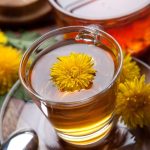Osteoarthritis (OA) is one of the most common types of arthritis, affecting millions of individuals worldwide. Characterized by the degradation of cartilage in joints, it leads to pain, stiffness, and decreased function. Despite being a chronic condition, effective management strategies can significantly improve quality of life. This article delves into various aspects of osteoarthritis management, offering insights into preventive measures, diagnosis, and a combination of conventional and alternative treatments.
Osteoarthritis often develops as a result of aging or joint injury, with the knee and hip joints commonly affected. Although there is no cure, understanding the disease and adopting a comprehensive management plan can help mitigate its effects.
One of the key aspects of managing osteoarthritis is preventive care, which focuses on minimizing the risk of developing the condition or slowing its progression. Individuals can reduce their risk by protecting injured joints from further damage, maintaining a healthy weight, engaging in regular exercise, and avoiding repetitive motions that could strain the joints.
Diagnosis and Preventive Care
Diagnosing osteoarthritis typically involves a combination of methods, as there is no single test to confirm the disease. A physical examination can reveal symptoms such as limited range of motion, joint swelling, and tenderness. Additionally, X-rays of the affected joints can show loss of joint space and, in advanced cases, the wearing down of bone ends and the presence of bone spurs.
Preventive care plays a crucial role in managing osteoarthritis. Exercising regularly, losing weight, and maintaining a healthy lifestyle are essential components of prevention that can significantly impact the progression of OA. Exercise not only strengthens muscles, thereby improving joint support, but also enhances range of motion, balance, and coordination.
Treatment Approaches
Treatment for osteoarthritis aims to alleviate pain and improve joint function. While there is no one-size-fits-all treatment plan, combining conventional treatments with complementary and alternative medicine (CAM) can yield effective results.
Most conventional treatments focus on pain relief and improving the range of motion. Non-steroidal anti-inflammatory drugs (NSAIDs) are commonly used to alleviate pain and inflammation. Additionally, physical therapy can help improve joint function through targeted exercises.
Complementary and Alternative Medicine (CAM)
CAM therapies offer additional avenues for managing osteoarthritis symptoms. Supplements such as glucosamine and chondroitin are often recommended. Although the Glucosamine/Chondroitin Arthritis Intervention Trial (GAIT) showed mixed results, continued research suggests that these supplements may benefit individuals with moderate-to-severe OA.
Omega-3 fatty acids, found in fish oil, are known for their anti-inflammatory properties. However, individuals taking blood thinners should consult their healthcare provider before incorporating these supplements, as they may increase the risk of bleeding.
S-adenosylmethionine (SAMe) is another supplement that has shown promise in reducing pain and improving joint function. Vitamins and minerals such as manganese, vitamin D, and vitamin C also play a role in maintaining joint health.
Homeopathic Remedies and Mind-Body Medicine
Homeopathic remedies like comfrey gel, R. toxicodendron, and arnica have been used to alleviate osteoarthritis symptoms. While these treatments are not universally accepted, some individuals report positive results.
Mind-body medicine emphasizes the connection between mental and physical health. Relaxation techniques such as guided imagery, meditation, and yoga can help reduce pain and improve overall quality of life. Clinical trials have demonstrated yoga’s efficacy in relieving OA symptoms, particularly for those with knee OA. Tai Chi, a form of classical conditioning, also offers benefits such as improved fitness, stronger muscles, and better flexibility.
Yoga and Tai Chi
Yoga and Tai Chi have been recognized for their therapeutic benefits in managing osteoarthritis. Yoga, an ancient practice originating from India, offers physical, psychological, and emotional benefits. Specific yoga postures, or asanas, can strengthen muscles, enhance flexibility, and provide pain relief. Studies have shown that practicing yoga can reduce pain and improve range of motion in individuals with OA.
Tai Chi, an ancient Chinese martial art, is another beneficial practice for those with osteoarthritis. It focuses on slow, deliberate movements and deep breathing, improving overall fitness and flexibility. Clinical trials have reported significant improvements in quality of life, reduced stress, and enhanced physical function in individuals practicing Tai Chi.
Conventional Medications and Lifestyle Changes
In addition to supplements and physical practices, conventional medications play a critical role in managing OA symptoms. NSAIDs, such as ibuprofen and naproxen, are commonly prescribed to reduce pain and inflammation. However, long-term use of NSAIDs can lead to complications like stomach bleeding and kidney problems.
Lifestyle changes, such as losing weight and maintaining a healthy diet, are essential in managing osteoarthritis. Weight loss can significantly reduce the pressure on weight-bearing joints, slowing cartilage degradation and alleviating pain. A balanced diet rich in anti-inflammatory foods, vitamins, and minerals can support overall joint health.
Emerging Treatments and Future Directions
Researchers are continually exploring new treatments for osteoarthritis, focusing on cartilage regeneration and innovative therapies. While regrowing cartilage is not yet possible, advancements in medical research offer hope for future breakthroughs. In the meantime, individuals can rely on a combination of conventional treatments and CAM therapies to manage their symptoms effectively.
Pregnancy and Osteoarthritis
Pregnant women with osteoarthritis should exercise caution when considering treatments. Many herbs and supplements have not been tested on pregnant women, and some may be unsafe during pregnancy. It is crucial to consult with an obstetrician before taking any medication, herb, or supplement.
Prognosis and Complications
The prognosis for individuals with osteoarthritis varies depending on the severity of the condition and the effectiveness of treatment. While many people can control their symptoms and prevent the condition from worsening, others may experience severe complications. Advanced osteoarthritis can lead to complete cartilage loss, significantly impairing mobility and quality of life.
In the most severe cases, osteoarthritis can cause an inability to walk, particularly when the hip or knee joints are affected. Long-term use of NSAIDs may also result in complications such as stomach bleeding and kidney problems. Despite these challenges, many individuals with osteoarthritis can lead fulfilling lives by adopting appropriate management strategies and seeking medical care when necessary.
Conclusion
Osteoarthritis is a prevalent and often debilitating condition, but it is not insurmountable. By understanding the disease, adopting preventive measures, and incorporating a combination of conventional and alternative treatments, individuals can effectively manage their symptoms and improve their quality of life.
From regular exercise and weight management to exploring supplements and practicing mind-body techniques like yoga and Tai Chi, there are numerous strategies to combat the effects of osteoarthritis. Ongoing research continues to uncover new insights and potential treatments, offering hope for better management and improved outcomes in the future.
For more information on managing osteoarthritis, consider exploring resources such as Mount Sinai and WebMD, which provide valuable insights and updates on the latest research and treatment options.
By taking proactive steps and remaining informed, individuals with osteoarthritis can lead healthier, more active lives despite the challenges posed by this chronic condition.










